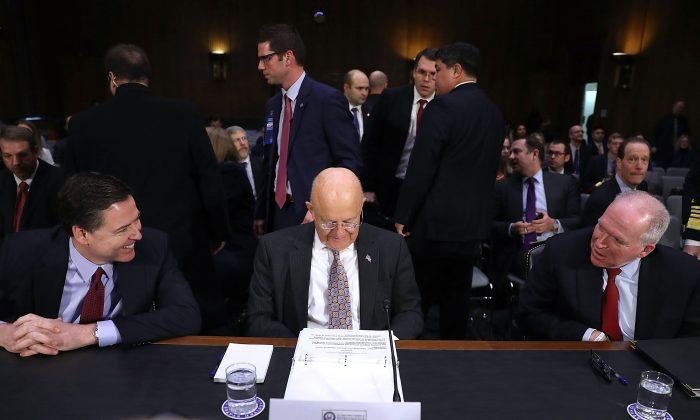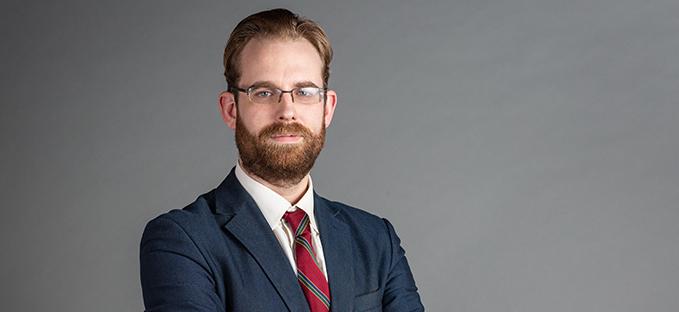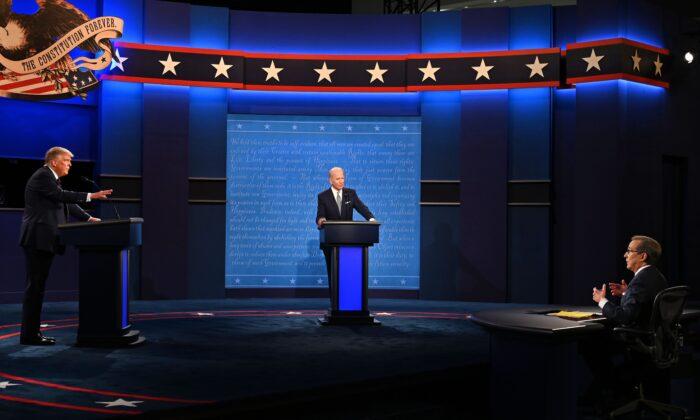News that Attorney General William Barr appointed U.S. Attorney John Durham to examine the origins of the Trump–Russia collusion investigations has sent shockwaves across Washington.
Simultaneously, it was reported that Barr is working with the directors of the CIA, the FBI, and the Office of the Director of National Intelligence (ODNI) to review the intelligence-gathering techniques used to investigate President Donald Trump’s 2016 campaign.
The announcements are significant given the amount of information already known, much of which points to irregularities in the investigations and a severe bias.
Take, for example, text messages sent between FBI agent Peter Strzok and FBI lawyer Lisa Page—both of whom were working on the counterintelligence investigation into the Trump campaign—in which Page asked Strzok: “He’s not ever going to become president, right? Right?!”
“No. No he won’t. We’ll stop it,” Strzok responded.
1. What were the roles of the CIA and Brennan’s ‘Interagency Task Force’?
Former CIA Director John Brennan has admitted in testimony before Congress and in media interviews that he passed intelligence received from the UK on the Trump campaign to the FBI with the intention of having the bureau investigate it.“It served as the basis for the FBI investigation to determine whether such collusion [or] cooperation occurred.”
We know from statements by Rep. Devin Nunes (R-Calif.) that there was no official intelligence product that served as the basis of the Trump investigation, meaning all the intelligence-sharing consisted of unofficial intelligence products.
2. How exactly did the FBI use the ‘Steele dossier’?
The dossier produced by former British MI6 official Christopher Steele played a key role in the FBI’s investigation of the Trump campaign, as well as the creation of the public perception that Trump colluded with Russia. None of the key 103 allegations contained in the Steele dossier were confirmed in the investigation by special counsel Robert Mueller.Fusion GPS co-founder Glenn Simpson, alongside Steele, actively pushed the false allegations contained in the dossier through the FBI, the DOJ, the State Department, and the media.
An investigation by the House Intelligence Committee showed that the FBI relied heavily on the Steele dossier in its application for a FISA (Foreign Intelligence Surveillance Act) warrant to spy on former Trump campaign adviser Carter Page. We also know that the FISC (Foreign Intelligence Surveillance Court) wasn’t informed that the dossier was a political opposition research project funded by an opposing political campaign.
The FBI had used Steele as a paid official source until it severed relations with him over his unauthorized contact with the media.
3. What was Obama’s role in the Trump investigations?
It’s unclear how much former President Barack Obama was involved in the investigations of the Trump campaign. Given the involvement of the directors of the CIA and FBI in the highly sensitive investigations of a presidential candidate, it’s unlikely he wasn’t aware.We also know that in January 2017, Obama received a briefing by Brennan, Comey, and DNI James Clapper in which he was given a summary of the Steele dossier, which was attached to an intelligence report.
Trump recently hinted in an interview with Fox News’ Sean Hannity that Obama was aware:
4. What happened with the information obtained through spying on the Trump campaign?
We know that the Trump campaign was spied on in at least five different ways.The question remains, what was the surveillance information used for, and with whom was it shared? Was any of the information shared for political purposes? And was any of it shared with Hillary Clinton’s campaign or the DNC?
5. Did Obama officials and the DNC collude with Ukraine?
Obama administration officials from the National Security Council, the FBI, the DOJ, and the State Department met with Ukrainian corruption prosecutors in Washington in January 2016.Seven months later, Ukrainian Member of Parliament Serhiy Leshchenko would publicly reveal alleged payments contained in a Party of Regions ledger to Trump campaign manager Paul Manafort, leading him to be removed from the campaign.
6. Was the FBI’s team to investigate Trump hand-picked, and why?
Several of the key investigators of the FBI’s counterintelligence investigation into Trump were the same as those investigating Hillary Clinton’s use of a private email server to send classified information.Notably, FBI Deputy Director Andrew McCabe, FBI agent Peter Strzok, and FBI lawyer Lisa Page (who at the time was a special counsel to McCabe) were involved in both investigations.
McCabe had been promoted on July 30, 2015, to the No. 3 position within the FBI, as associate deputy director, and was moved to FBI headquarters from the Washington Field Office.
Around two months after the FBI’s investigation of Clinton was opened, Strzok was one of several hand-picked agents sent over from the Washington Field Office and moved to headquarters to help with the investigation.
Priestap was unaware of the meeting Strzok had with McCabe and Page that was described in the “insurance policy” text message.
7. What was Comey’s role in the investigation of the Trump campaign?
Former FBI Director James Comey, since leaving the bureau, has made multiple public statements about his involvement in the investigation of the Trump campaign. In a recent CNN town hall interview, he said that he was “briefed on it on a regular basis” and that “they kept me closely informed.”8. What was Lynch’s involvement?
Very little is known about former Attorney General Loretta Lynch’s involvement in the investigation of the Trump campaign. As FBI director, Comey reported directly to Lynch.9. Did reporters receive payments from Fusion GPS?
Fusion GPS has made payments to journalists who reported on topics related to alleged Russian interference in the elections, court documents show. Documents filed in the District of Columbia in 2017 by Scott Glabe, who was then the deputy general counsel for the House Permanent Select Committee on Intelligence, showed that at least three journalists received payments from the company.“They are not permitted to publish any articles based on that work, nor do we pay journalists to write stories,” Fusion GPS’s counsel, Joshua Levy, told The Epoch Times in a statement in November 2017.





Friends Read Free